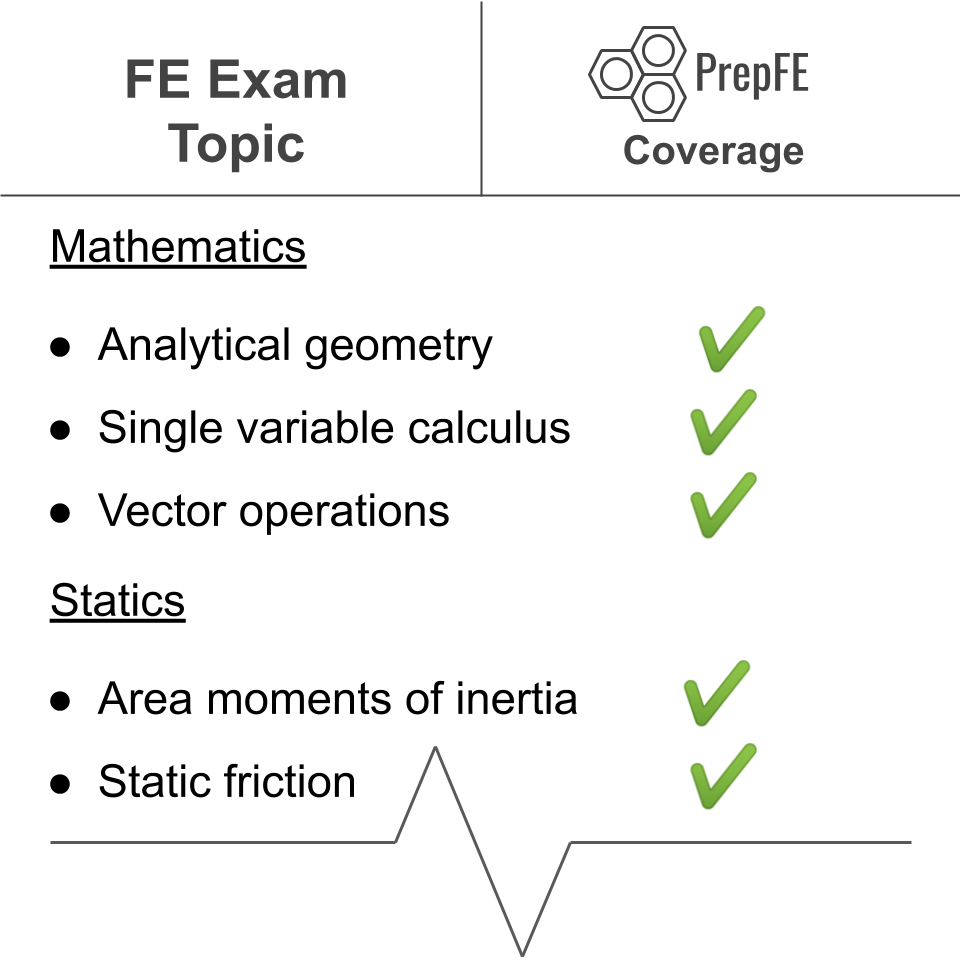Strategize your FE review time, so you can pass with less studying

Popular time management technique, the Pareto Principle, states that 80% of the desired results can be achieved with just 20% of the work. And the remaining 80% of the work will only grant you 20% additional desired results. In other words, the Pareto Principle is saying that after certain specific work is done, the rest of the work will give you diminishing returns. In the FE exam prep world, this would mean that studying for certain specific exam topics will compromise the majority of the actual prep needed to pass the exam. And studying for other topics, will make little difference in you passing the exam.
In this blog post, we attempt to apply the Pareto Principle to FE exam prep so you minimize the amount of studying needed to pass the Fundamentals of Engineering (FE) exam. We apply this time management technique by categorizing the FE exam topics into buckets and then deciding how much time should be allocated to each bucket. The goal is to not just work hard. It is to work hard and smart.
1. Review the list of FE Exam topics and classify the exam topics into buckets
Familiarize yourself with the published list of topics that could be asked on the Fundamentals of Engineering (FE) exam. Pay close attention to the subtopics e.g. Mechanics of Materials -> Mohr's Circle; Statics -> Area Moment of Inertia. Do you have a pretty good idea not just how to solve a typical e.g. statics problem, but also how to solve an e.g. area moment of inertia statics problem? Additionally, note the number of possible questions from each exam topic. Some topics have more potential questions than others.
After reviewing the list of exam topics, classify the topics into five categories (buckets): Weaker topics with lots of questions, weaker topics with fewer questions; topics you're really good at; topics you never saw in school; and the remainder of topics that didn't fit in the other categories.
.png)
2. Develop a study schedule
Develop a study schedule that takes into account:- What the specific exam topics are
- How many questions from each exam topic there are
- How prepared you feel for that particular topic, currently
- How much time you got left to study
So how much can you really study with the time you got left? Let's say you have 4 weeks left before the exam and you can study 1.5 hrs every day Monday-Friday and 4 hrs on Saturday with Sunday off. You would then have ( 1.5 hrs X 5 days + 4 hrs Saturday) X 4 weeks = 46 hrs to study for the FE exam. If it takes you 15 minutes to do and review one practice problem, then in 46 hrs you could do 184 practice problems. Attempt to calculate how many practice hours (and therefore practice problems) you can do based on your exam date and available study time.
Now that you know how many practice problems you can do in your time frame, decide how to allocate your practice problem review time. Will you evenly distribute the e.g. 184 practice problems among the five buckets? Or will you make the decision to allocate 90% of your practice problems to the first 4 buckets and the remaining 10% to the last bucket? How you allocate your prep time among the buckets is ultimately a personal decision based on your specific circumstances.

3. Practice. Practice. Practice
Research shows that repeated practice learning, spaced out over time is the most effective way to study. You can use PrepFE resources to strategize your studying and focus on subjects you need the most review on.
On the PrepFE dashboard, select the specific exam topics you want to study for.
Attempt to solve the practice problems without looking at the solution at first. If you get the problem wrong, look at the answer and understand what is going on. And then attempt to solve the problem AGAIN without looking at the solution. This will create "muscle memory" for that type of problem, which will help you speed through if you face a similar problem in the actual FE .